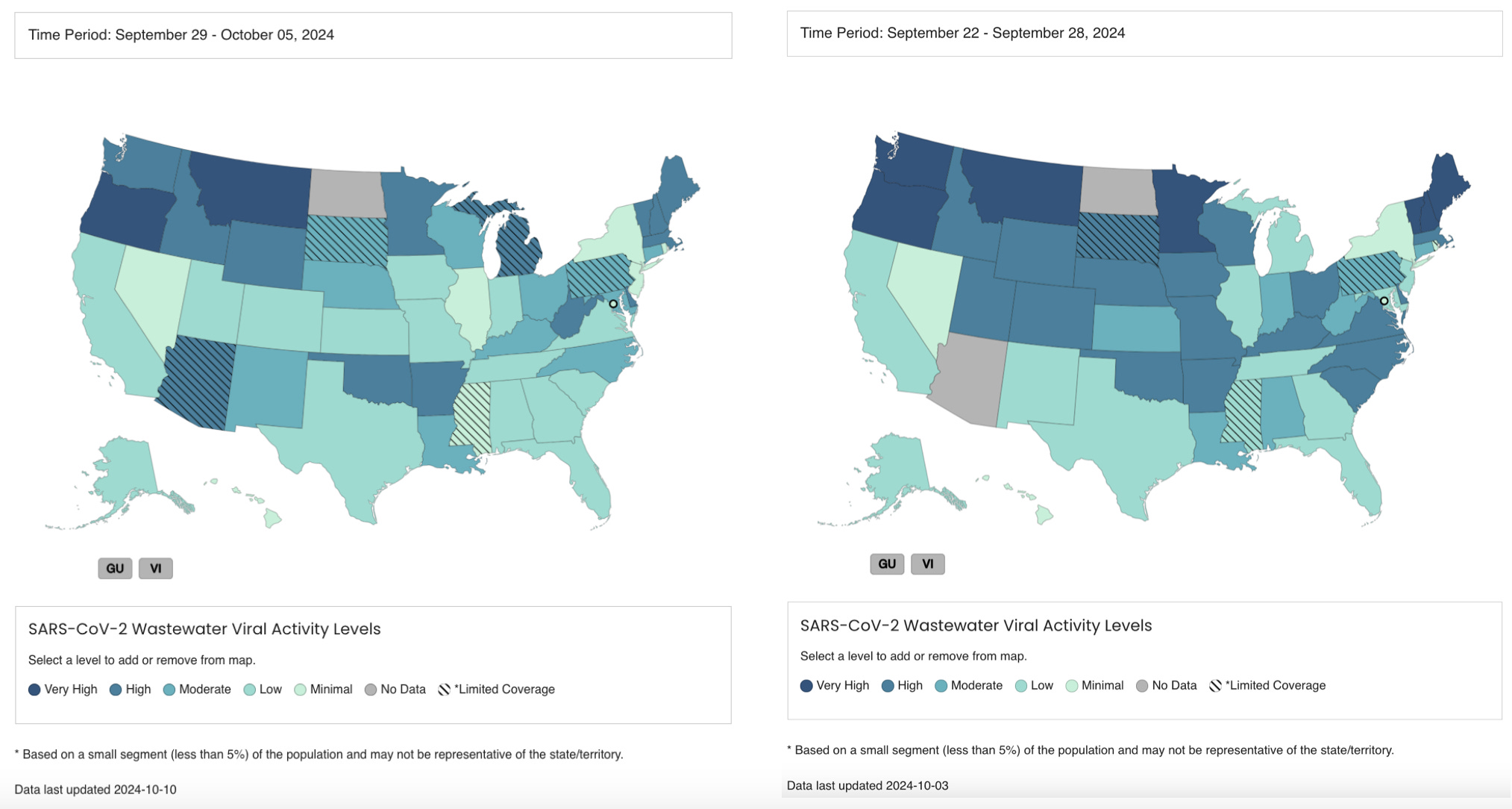Weekly Reported COVID Cases in Montana Hold Steady Compared to Last Week, Waste Water Prevalence Highest in the Nation
Free COVID Tests Available Now
By Denise Rivette
The reported rates of COVID-19 remained basically unchanged last week in Montana. On Friday, October 11, the Montana Department of Health and Human Services reported 527 new COVID cases, a 0.6% increase (3 cases) from the 524 cases reported the previous Friday. Not all who test positive report their results to the health department.
In addition, the Centers for Disease Control and Prevention (CDC) has been tracking the prevalence of COVID in wastewater around the country. The prevalence in Montana’s wastewater remained very high. Below is a graphic representing nationwide levels on October 5 (left) and September 28 (right). At a prevalence level of 9, Montana’s and Oregon’s COVID levels are the highest in the nation and are the only two states remaining in the “very high” range, according in the CDC. All other reporting states and territories are at 8 or lower.
Free COVID Tests Available Now (Info from USPS and CovidTests.gov)
Residential households in the U.S. are now eligible for another order of four free at-home tests from USPS.com.
Here's what you need to know about your order:
Each order includes four individual rapid antigen COVID-19 tests (COVIDTests.gov has more details about at-home tests, including extended shelf life and updated expiration dates)
You can order now
Orders will ship free, starting September 30, 2024
Expiration Dates Extended for Existing Tests
The tests you have now may show “expired” dates on the box, but FDA has extended those dates; see the full list of extended expiration dates.
When is the best time to get the vaccine?
According to CDC guidance, if you’ve recently had Covid, “you may consider delaying your vaccine dose by 3 months” as the infection usually boosts your natural antibodies during that time. According to the New England Journal of Medicine, peak effectiveness of vaccines against infection occurs at about 4 weeks and decreases to about 20% effectiveness after 20 weeks. Vaccines are available now and may be administered at the same time as your flu shot, as the winter surge of infections for both are expected to coincide. Some people choose to wait if they are planning to travel for the holidays to time the peak effectiveness with their travels. The CDC states it is safe to get a COVID-19 vaccine and other vaccines, including flu and RSV vaccines, at the same time. Your physician is the best source of information for your individual situation.
New COVID guidelines from the CDC
New COVID guidelines from the CDC align with those of other endemic respiratory viruses and advise that people who test positive stay home and stay away from others (including those in the same household). According to the CDC, after testing positive you can resume normal activities when both of the following statements have been true for at least 24 hours:
Your symptoms are getting better overall; and
You do not have a fever (and are not using fever-reducing medication)
When returning to your normal activities, you should take added precautions over the next five days, such as masking, physical distancing and testing.
KFF Health News has produced a slide show with information including the new CDC guidelines. You can see the slideshow HERE.





